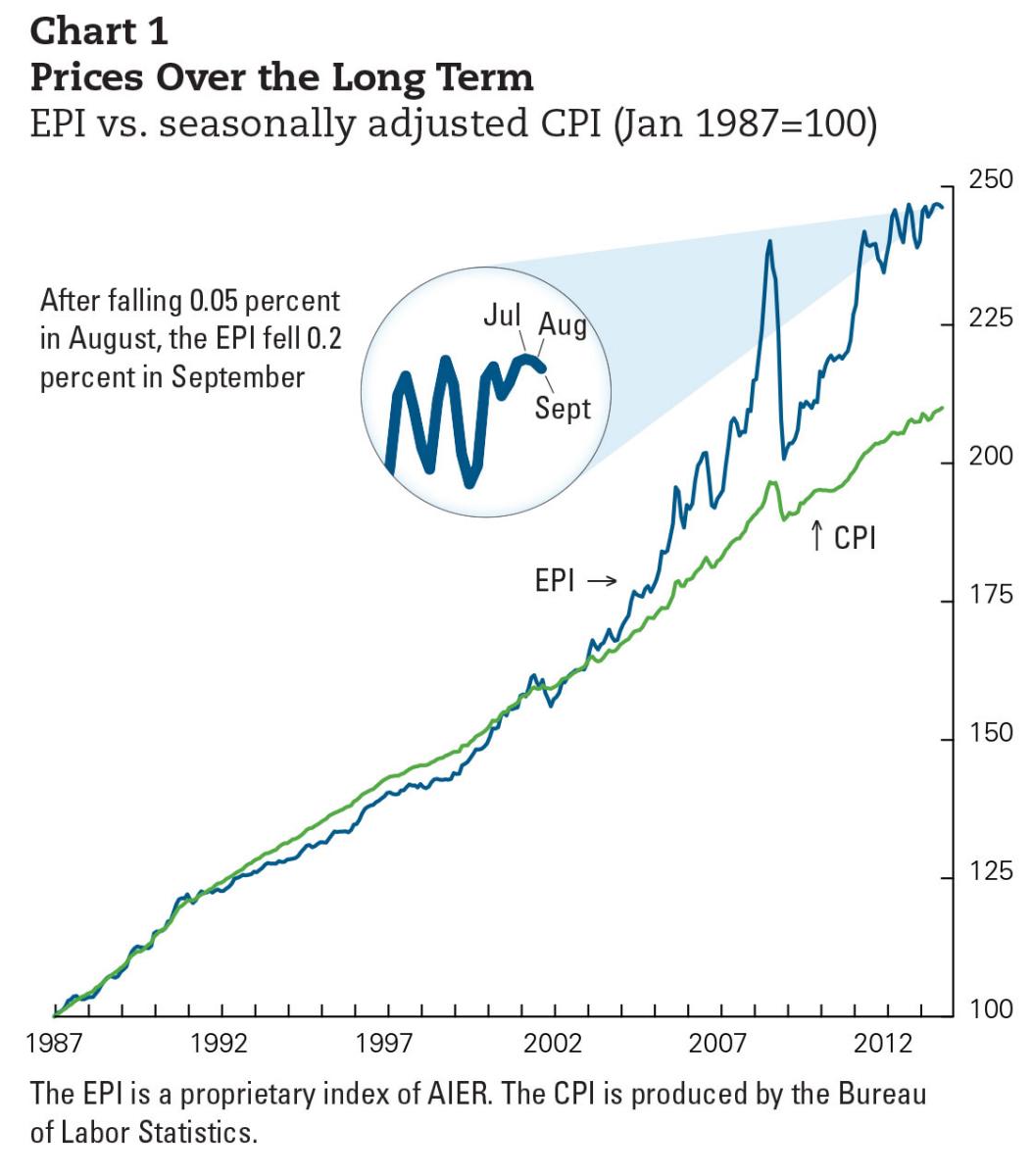Gas Price May Aid Holiday Sales
The Consumer Price Index for All Urban Consumers is a broad index that includes all the goods and services that consumers buy over their lives. In contrast, AIER’s Everyday Price Index (EPI) measures the prices of the things they buy on a regular basis. It is tied to day-to-day challenges to consumer budgets. Because it tracks the prices the public most often sees, it is also more related to the perceptions they hold about prices and inflation, and the information they use to form expectations and make decisions.
Food and energy, specifically excluded in the core CPI used by policymakers, are important to the EPI and households. In October, some food prices, like those of meat, poultry, fish, and eggs, jumped—rising 0.6 percent, the fifth monthly increase in a row. But, overall, food and beverage price increases were fairly tame. Even though these goods account for almost 38 percent of everyday purchases, their 0.1 percent overall price increase did little to offset the energy windfall.
While the downward trend in everyday prices is not likely to continue, especially at this pace, it could be good news for the fourth quarter holiday season. Lower energy costs offer welcomed relief to strapped household budgets. Because energy goods and services are such frequent and visible purchases, lower prices should have a positive impact on consumer expectations. Less stressed budgets and an improved outlook could contribute to more lively holiday sales in November and December.






